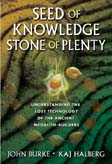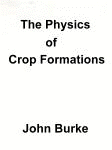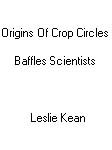PUBLISHED MATERIALS
Scientific Papers:
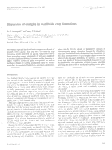
|
Levengood, W.C. & Talbott, Nancy P. (1999) Dispersion of energies in worldwide crop formations Physiologia Plantarum 105:615-624 Munksgaard International Publishers Ltd. Copenhagen, Denmark © Physiologia Plantarum, 1999 |

|
Levengood, W.C. & Burke, John
A. (1995) Semi-Molten Meteoric Iron Associated with a Crop Formation Journal of Scientific Exploration 9:2, 191-199 Journal of Scientific Exploration |
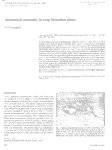
|
Levengood, W.C. (1994) Anatomical anomalies in crop formation plants Physiologia Plantarum 92:356-363 Munksgaard International Publishers, Ltd. Copenhagen, Denmark © Physiologia Plantarum, 1994 |
Books & Articles:
| John Burke (the "B" in BLT) and Kaj Halberg present scientific evidence that the engineers who built many of the massive monuments of the ancient world may have known a secret. The henges, pyramids, mounds & dolmen were overwhelmingly sited where local geology magnified naturally-occurring EM fluctuations—energies which were enhanced by the structures built there. Addtionally, they show that seeds placed at these sites subsequently demonstrate increased growth-rate and yield, a discovery that may explain why these mysterious stone structures appeared all over the world. (Book Details) |
| "Origin of Crop Circles Baffles Scientists," written by well- known investigative reporter Leslie Kean, was published on September 16, 2002 in Rhode Island's The Providence Journal , and was the first comprehensive article published in the U.S. covering the BLT Research Team's work. |
Other articles written by Nancy Talbott or John Burke for farm journals and the "anomalous phenomena" audience have been published in specialty publications. Newspapers in the U.S., Canada and Europe have presented some of the laboratory results obtained by the BLT Research Team, but most frequently in inadequate detail. A major article did appear in The London Times Sunday Magazine several years ago, which featured the results presented in 2004 in BLT's x-ray diffraction study of clay minerals in crop circle soils.
